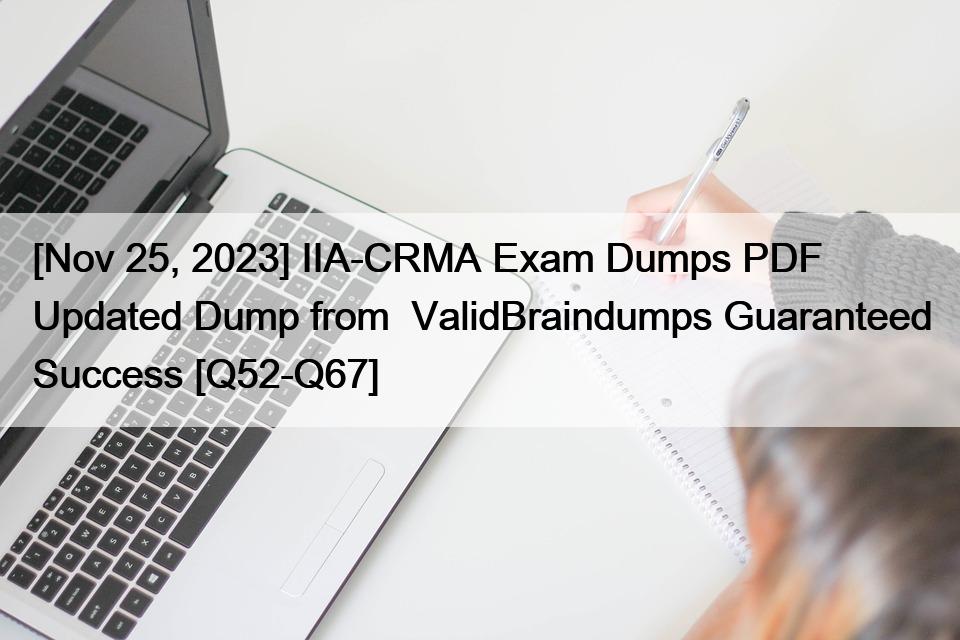[Nov 25, 2023] IIA-CRMA Exam Dumps PDF Updated Dump from ValidBraindumps Guaranteed Success
Pass Your IIA Exam with IIA-CRMA Exam Dumps
IIA-CRMA certification is highly valued in the industry and is recognized globally as a mark of excellence in the field of risk management assurance. It is an essential certification for internal auditors who specialize in providing risk management assurance services and wish to advance their careers in this field. Certification in Risk Management Assurance (CRMA) Exam certification demonstrates an individual’s commitment to professional development and their ability to provide valuable insights and assurance to stakeholders. Furthermore, the certification provides a competitive edge to professionals, helping them stand out in a crowded job market and bolster their career prospects.
IIA-CRMA exam is an essential certification for individuals working in risk management. It provides a comprehensive understanding of risk management principles, practices, and procedures, and is designed to enhance the professional capabilities of individuals in this field. Certification in Risk Management Assurance (CRMA) Exam certification demonstrates an individual’s knowledge and skills in risk management, and is highly regarded by employers worldwide.
New Real IIA-CRMA Exam Dumps Questions: https://www.validbraindumps.com/IIA-CRMA-exam-prep.html






